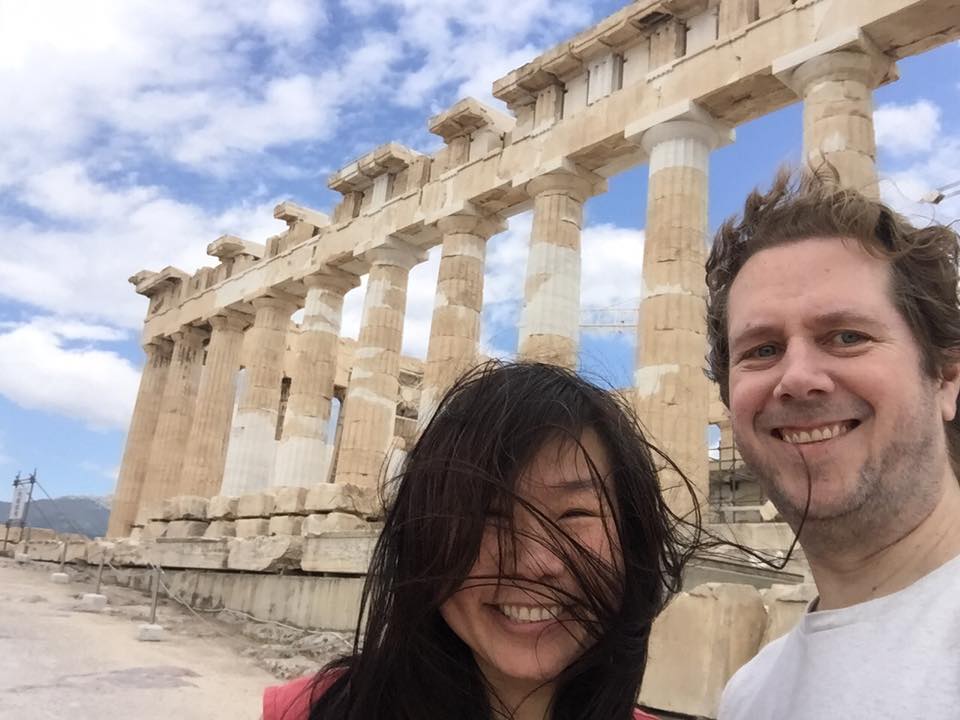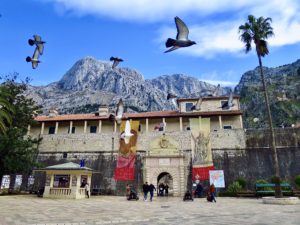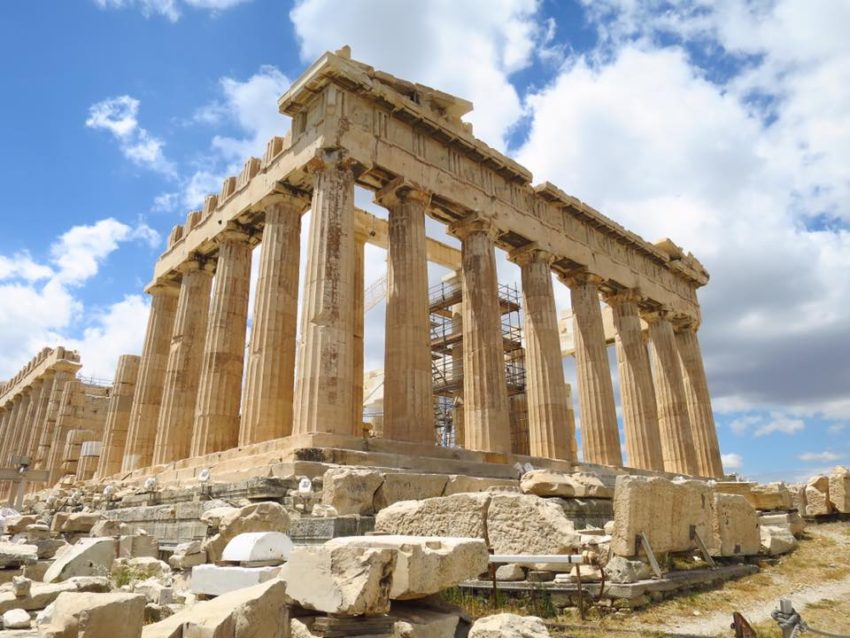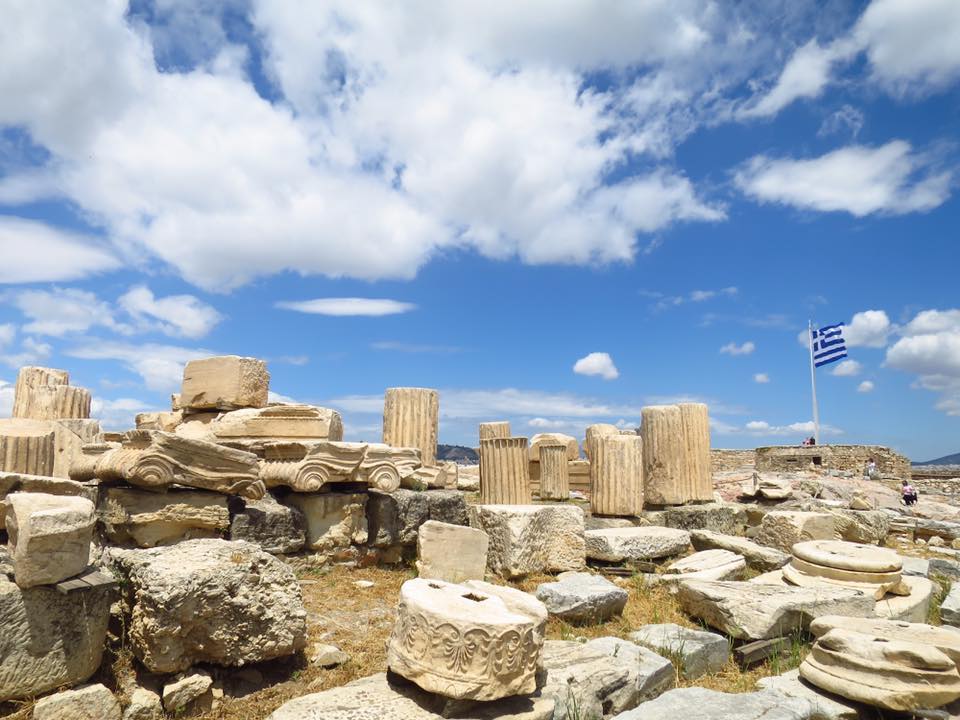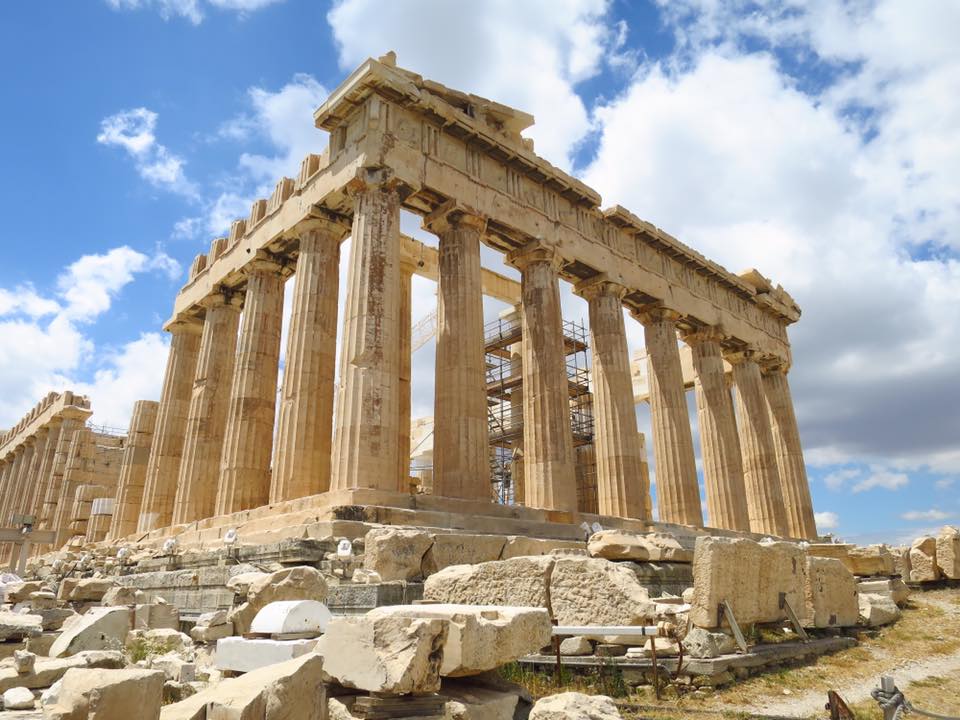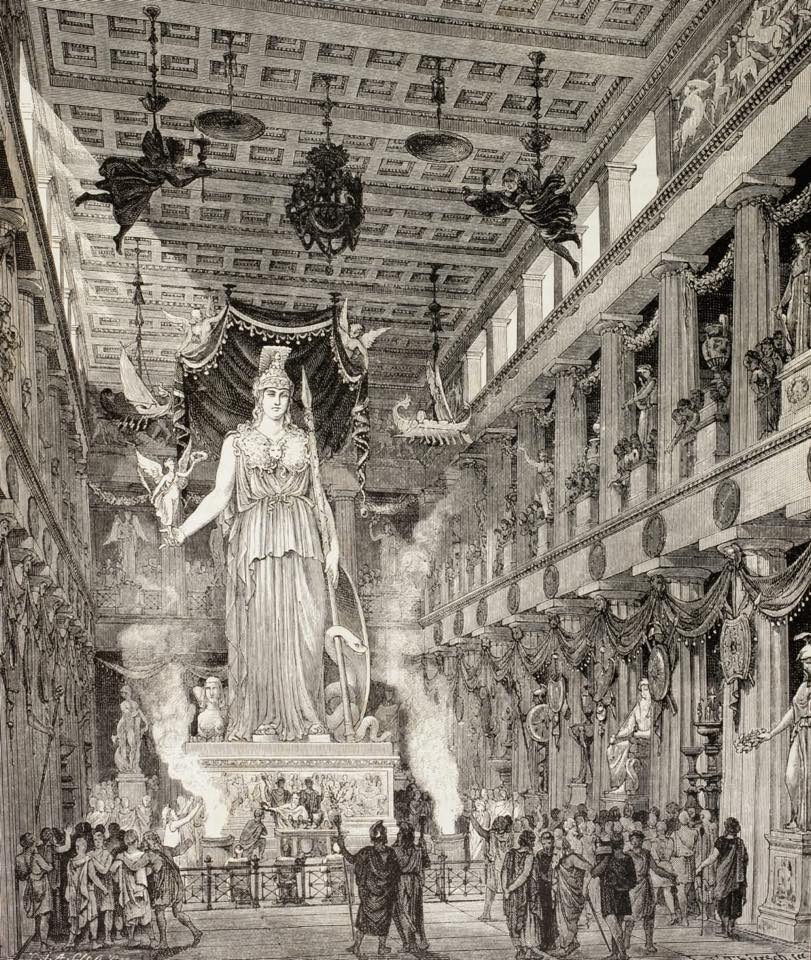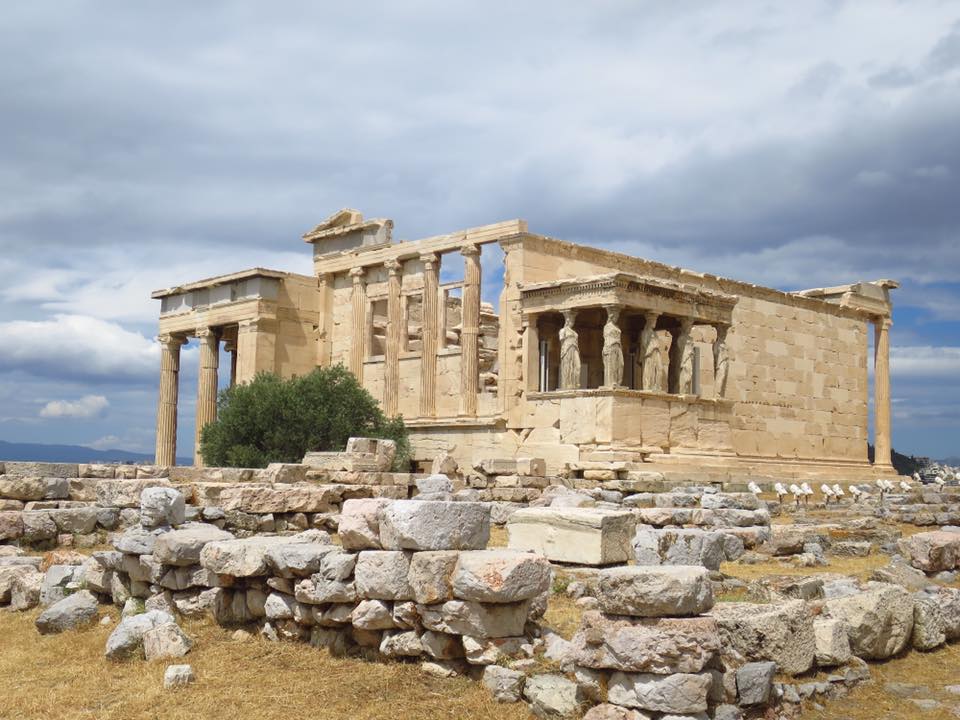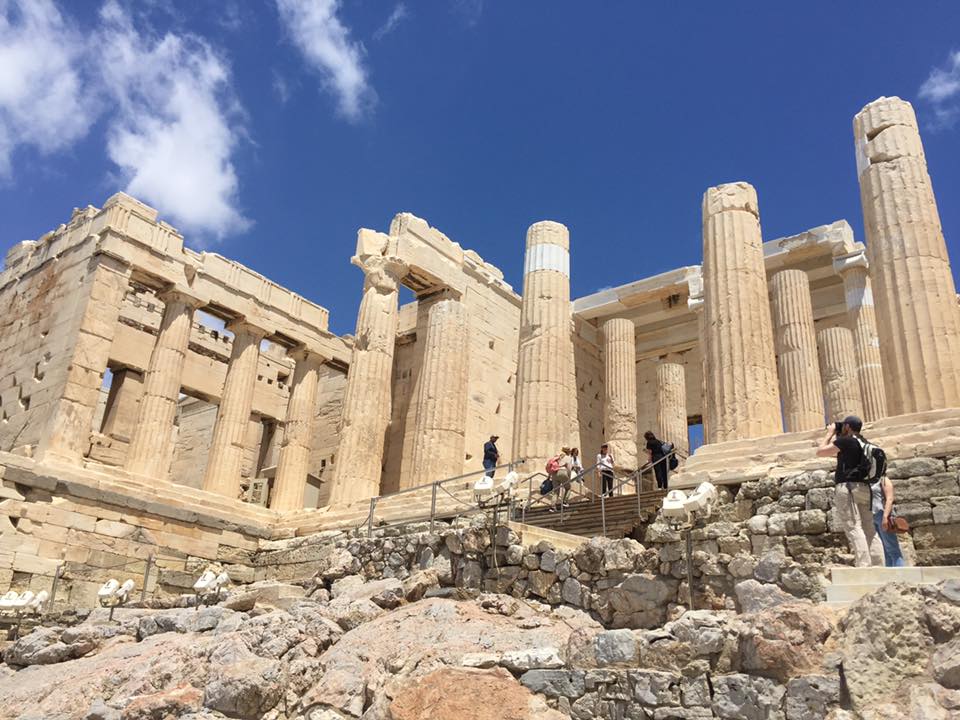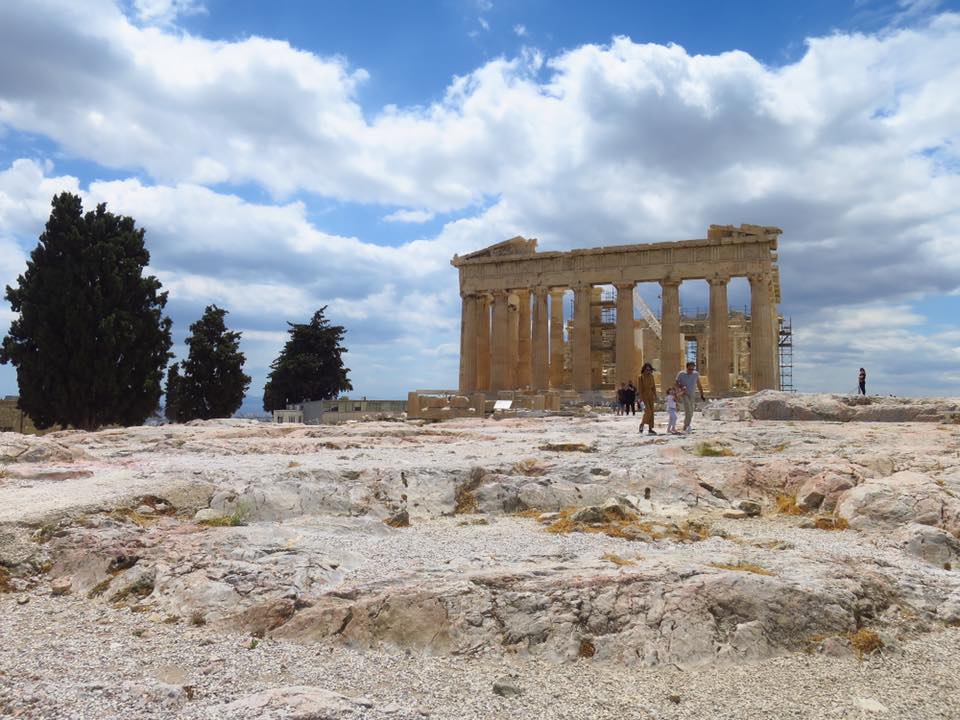Acropolis simply means “high city” in Greek. Many ancient Greek cities had an acropolis on a hill due to its natural defense. None was as impressive as the one in Athens, which is simply known as THE Acropolis.
Acropolis Hill in Athens has been inhabited since prehistoric times. When the Mycenaean civilization flourished in this region around 1600 BC (about 3,600 years ago), some of their kings lived on this hill. After the Mycenaean Empire’s collapse around 1100 BC, there was a Dark Ages period that lasted about 400 years. Even then, Athens and the Acropolis Hill remained inhabited.
The Greek people continued to migrate and established new coastal towns around the Aegean Sea and the Mediterranean Sea. Their ports and ships played important roles in trade between Asia, Egypt and Europe. Greek olive oil was sought after around the known world. The Greek world re-emerged as a collection of city-states; the two most powerful being Athens and Sparta.

See this place in action.
The fortunes of the Acropolis rose and fell with that of Athens’. When the Persians invaded, the temples were burned. Against all odds, Athens, with great help from Sparta, defeated the Persians in 480 BC. After the war, Athens became the leader of the newly formed Delian League which was essentially, the Greek Empire.
With Athens’s power secure and coffers full, Pericles, the democratically elected leader, commissioned some major structures for the Acropolis. The Propylaea was an impressive entry stairway. The Erechtheion was a shrine named after the mythical Athenian King, Erechtheus. The Parthenon was a temple dedicated to Athens’ patroness, Goddess Athena, to thank the Goddess of Wisdom and War for the victory over the Persians.
When The Parthenon was completed in 432 BC, the colorful and beautiful temple was the most architecturally astonishing building the world had ever seen. It was 45 feet (13.7 meters) tall. The base was 228 feet by 101 feet (about 70 meters by 31 meters). Inside was a 40-foot (12.2 meters) ivory-and-gold statue of Goddess Athena. I have included an artist’s rendition found on History.com.
The Golden Age of Athens was short lived. When city-states allied with Sparta grew sick of Athens’ aggressive ways, the Peloponnesian War erupted in 431 BC. It dragged on for 27 years ending with Athens’ complete and humiliating defeat in 404 BC. She never recovered her military glory. However, Athens remained an important learning center, and a tourist attraction even during ancient times.
When Alexander the Great of Macedon, another Greek kingdom, crushed the Persian Empire in 330 BC, Athens became just a small part of his large empire that stretched all the way to India.
In 146 BC, Athens fell under the rapidly expanding Roman Empire. The Romans adopted and adapted Greek architecture, and used it across the Roman Empire including on additions built right here at the Acropolis. They translated Greek literature and drama into Latin; studied Greek philosophy, mathematics, and art; but of course, avoided Greek democracy.
When the Roman Empire split, Athens went to the Eastern Roman Empire and was ruled from Constantinople. In the 6th century AD, the Romans, who were fully Christians by then, outlawed the pagan Greek Gods, and converted temples into churches. The Parthenon became the Church of the Virgin Mary. No one knows what happened to the giant statue of Athena which was lost by then.
When Constantinople was sacked by the Crusaders at the direction of the Venetians in 1204, Athens soon fell under Venice.
The Ottoman Turks conquered Athens in 1458 from the Venetians. It was said that Sultan Mehmed II was so in love with the Classical Greek architecture of Athens that he issued an edict for the buildings to be protected. Two years later, a minaret was added to the Parthenon, and the Temple of Athena which became a church became a mosque. Most of the building was left untouched.
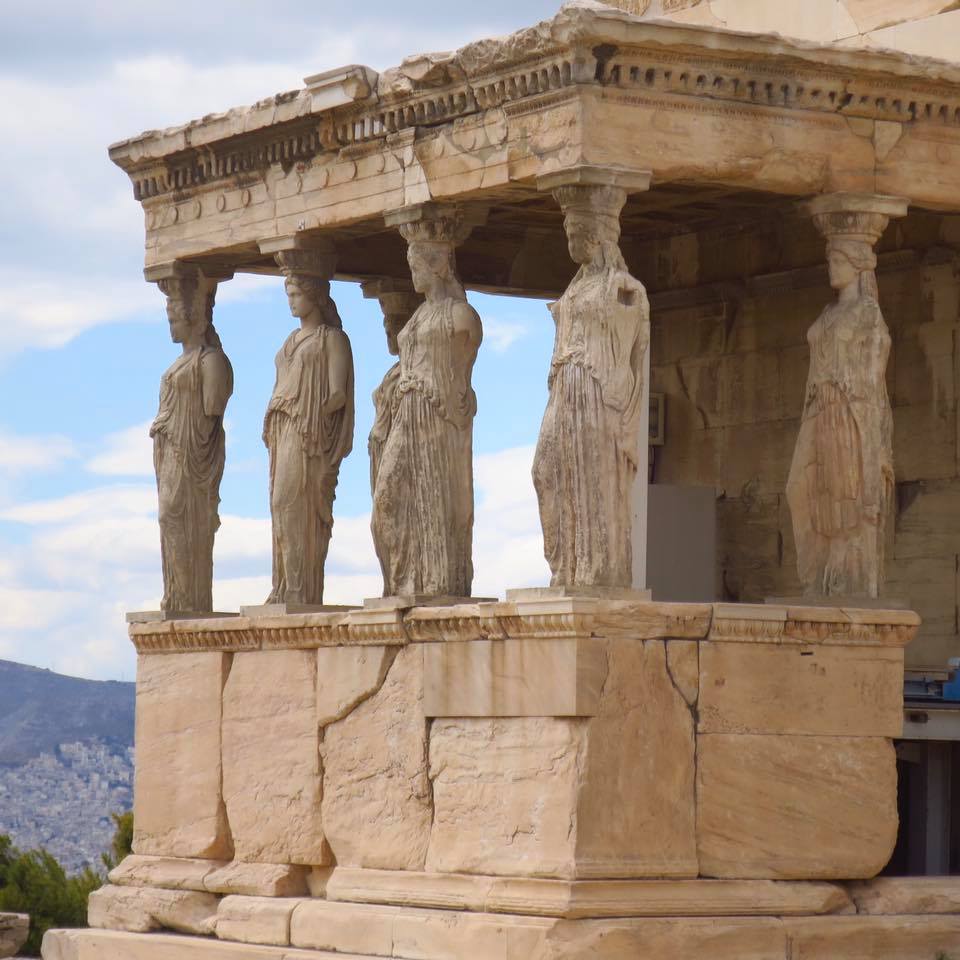
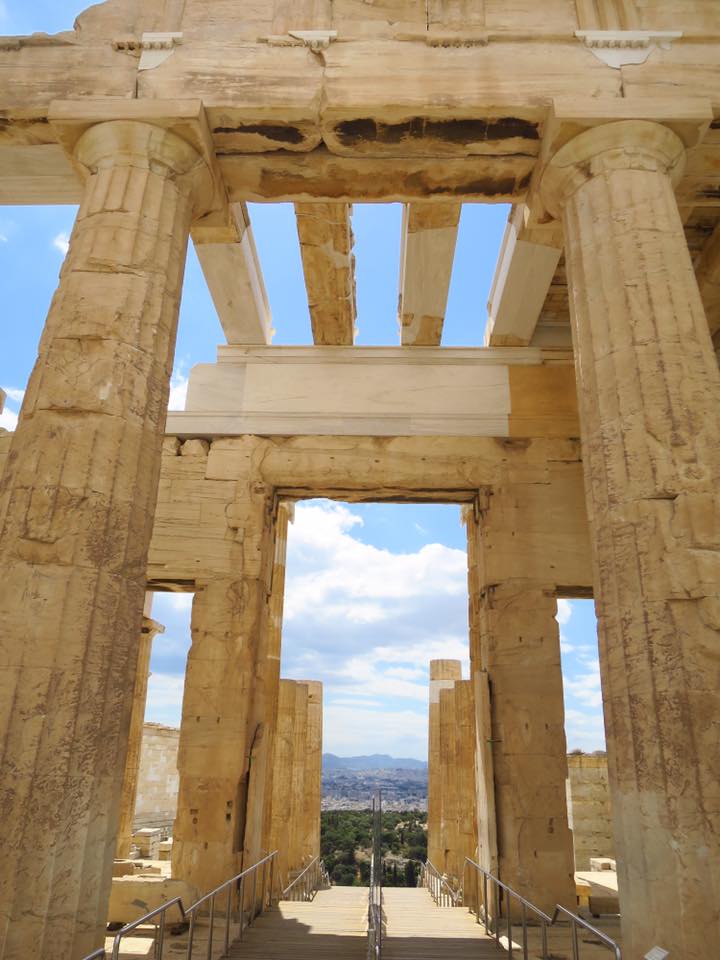
When the Venetians bombarded the Acropolis in 1687, a big part of the Parthenon exploded because of the gunpowder stored there. The damage was too major to be repaired. Looters, vandals, tourists and archaeologists helped themselves to it.
In 1801, Thomas Bruce, the Earl of Elgin, removed more than half of the sculptures and sold them to the British Museum. Although they were removed with the permission of the Turkish government at that time, Greece would still like these Elgin Marbles back.
Greece gained her independence from the Ottomans through the Treaty of Constantinople of 1832 after more than ten years of war. When Athens was selected as the capital city in 1834, there were only about 7,000 people living in the city, most of them around the Acropolis; some in huts.
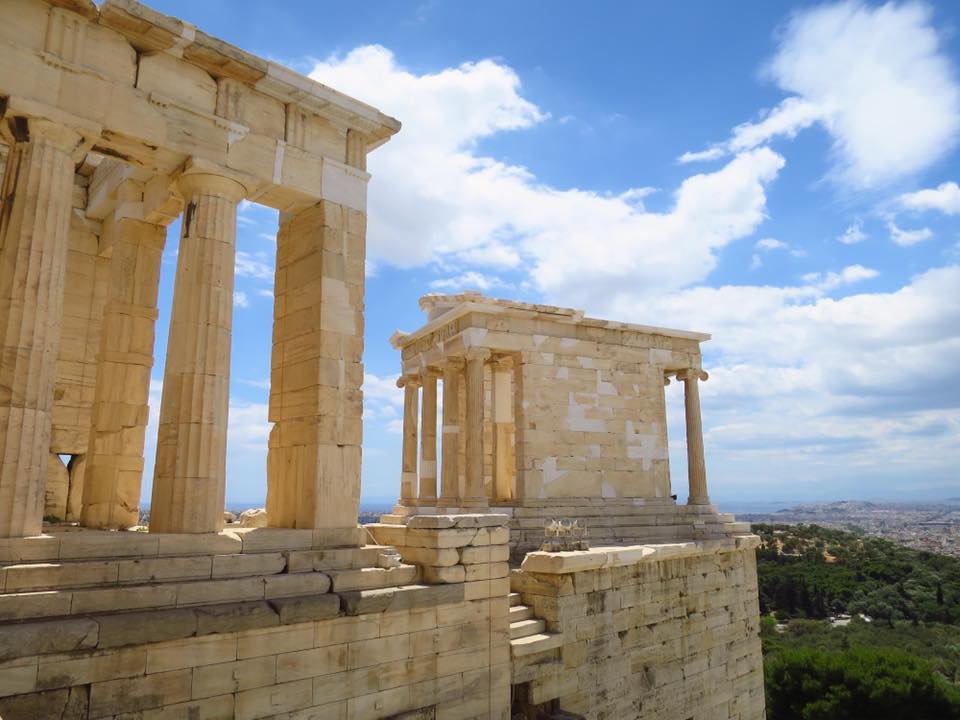

So, when Kenric and I, two 21st-century nobodies, got to spend an afternoon at the Acropolis on Friday, the feeling was indescribable. It had reopened on Monday, and social distancing was enforced. Actually, the plague of Athens that started in 430 BC during the Peloponnesian War killed more than one-third of Athen’s population. Some believe that caused her defeat.
We saw fewer than 50 visitors; there would normally be thousands. It made it much easier to imagine Socrates arguing with his fellow Athenians. When a beautiful cat approached, I cursed myself for forgetting cat food for the very first kitty I got to touch after 92 days! That’s what happens when you haven’t been outside in 65 days; you forget your routine and ruin it.
Even though I got brutally windburned and sunburned, it is still a very special experience because history, ancient buildings and cats all at once make me very happy. You know what else floats my boat? Archimedes’ principle of buoyancy; and I bet he hung out here too.
